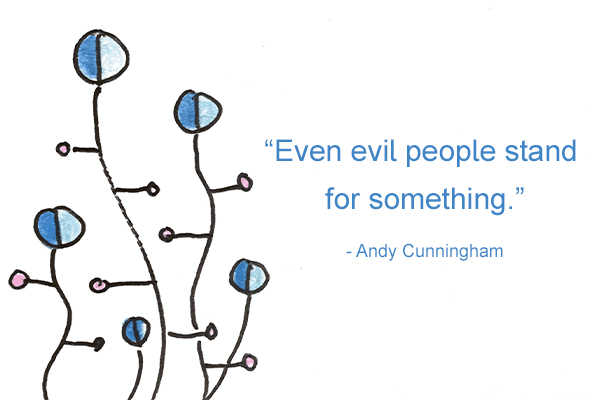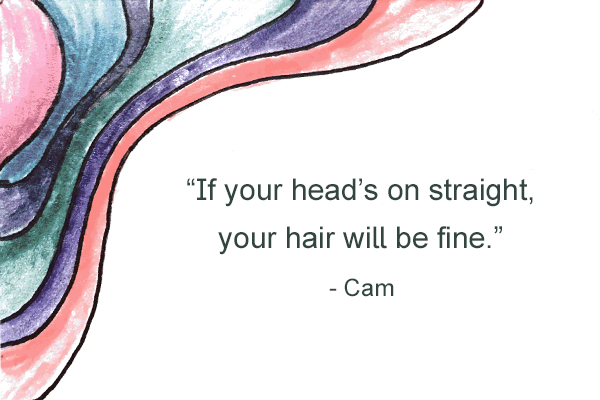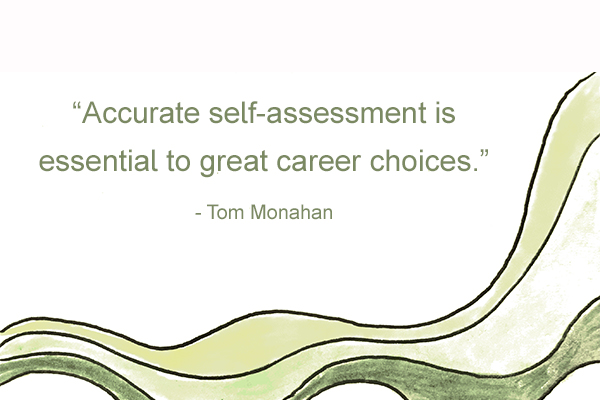Several years ago, my young daughter was helping me organize my work office after a move down the hall. The stacks of business books that I had accumulated over the years (and referred to periodically and wanted to keep handy) promised us a very long evening. Then I considered explaining to her how to organize them, by theme or if we should painstakingly alphabetize them. It occurred to us that the easiest (and dare I say, the fastest) way would be to organize them by spine color in rainbow series. Red book covers lead to orange, then yellow, green, blue, purple, and then white and, finally, black. It took only a few minutes to organize the books this way and it had a few surprising and pleasant consequences.
It turned the practical into art: I can’t tell you how many people have walked into my office and commented on my books. “Did you organize your books by color?” they would ask as they smiled. This library of business books became an art installation which people wanted to talk about. It really does look great and brings a smile to my face, and to office guests, every time. Books became a conversation piece and helped my guests and colleagues get to know me better, not just because of the titles on the shelf, but how they were arranged. And I can tell you that I really like authors who write red books and orange books are trending.
It made things easier to find: Come to find out, I can rarely remember the exact title or the name of the author, but 9 times out of 10 I can picture a book’s cover. This narrows the search considerably and within a few seconds I have the volume in hand. I know others’ might not have this kind of visual memory, but I suspect many of us do. Forget the Dewey Decimal System, this is the hue-ey decimal system (I couldn’t resist). This is especially useful as I have recently relocated across the country to Atlanta, and found it was easy (and fun) to set up my home office for maximum productivity using this now familiar system.
It sparked my imagination: As art often does, my book arrangement sparked new ideas. I am working now on a system to organize my Outlook calendar to align appointments, meetings, and blocked time to my goals using color cues. For me, new business development work is green, one big project is yellow, family priorities are purple, and, naturally, any time spent building out my new network in Atlanta is red (the ubiquitous color of the Falcons, Hawks, Atlanta United, UGA, GSU, and classic Atlanta brands like Coca-Cola, Chick-Fil-A, and newcomer, Honeywell…need I go on?). Perhaps for the freelancer or consultant reading this article any paid “billable hour” work is blue and any office work is orange. You can do this manually or using conditional formatting, it can be done auto-magically as you create or accept calendar entries. You can use a more sophisticated time or task tracking tool (like a CRM) for even more insights. Turning my calendar into a visual dashboard of how I am spending my time is generating new insights and changing my behavior. The adage is true that you manage what you measure. Try it yourself and at a glance, you can see if you are investing your time – your most precious and limited commodity – fully to your goals and priorities.
Now you might be asking a different question: why do I hold on to these physical books in a world of instant Internet searches, ebook readers, and, frankly, when often the Harvard Business Review synopsis of the book is better than the long form? It is because I know it works for me. I like books. I dog-ear the pages and write in the margins. Sure, I sometimes snap quotes into Evernote for future blog posts, but in the meantime, I like them stacked on my night stand and standing in a colorful array in my office.
And, I hope that one day when I write my New York Times best seller, you will all still have bookshelves, maybe even sorted by color, and will appreciate the hue of the book jacket I chose.
_________
This article was originally published on The Buzz on April 6, 2017. Special thanks to Jeff Hilimire from Dragon Army for renewing inspiration to color code my calendar.









































